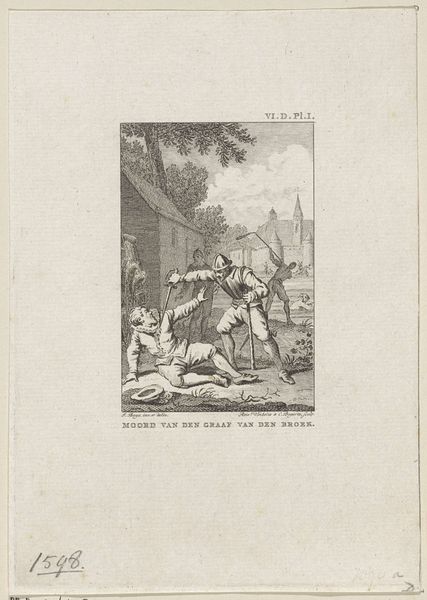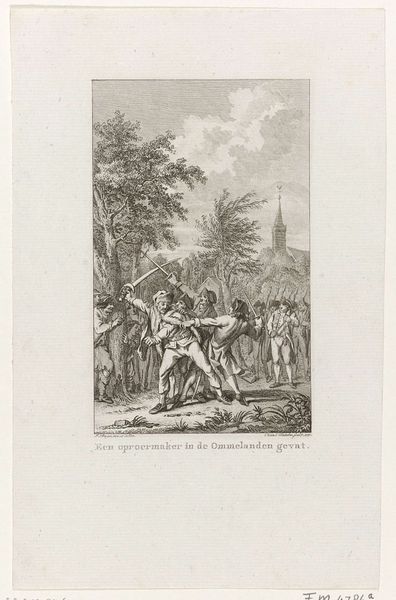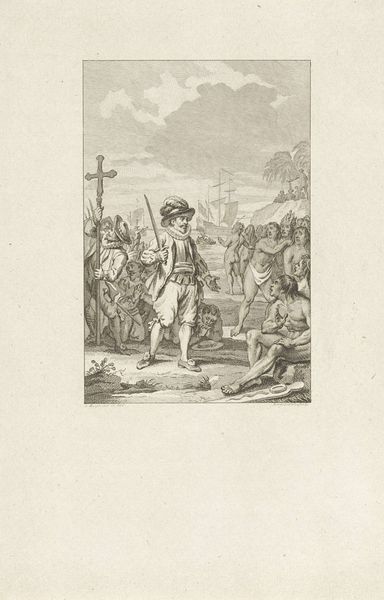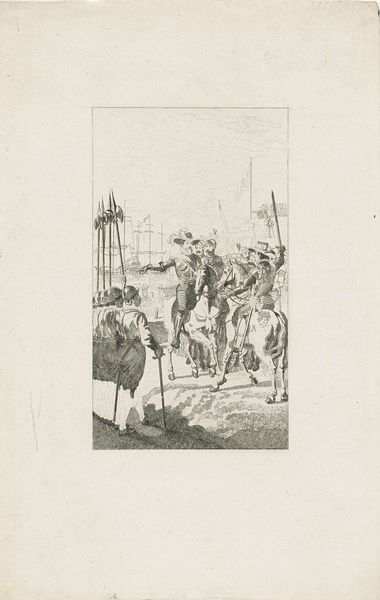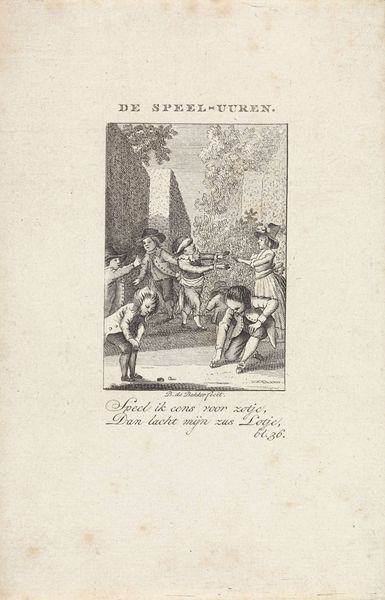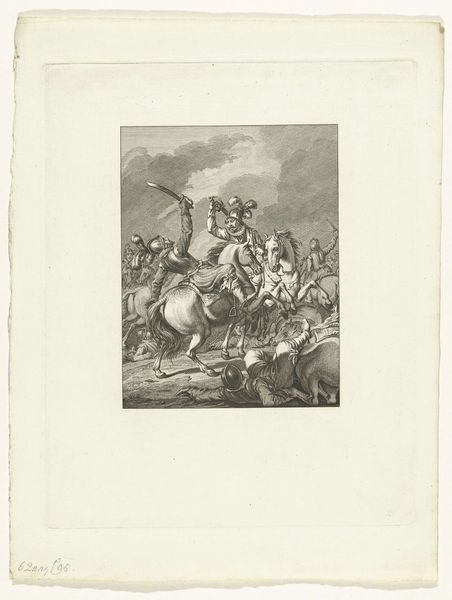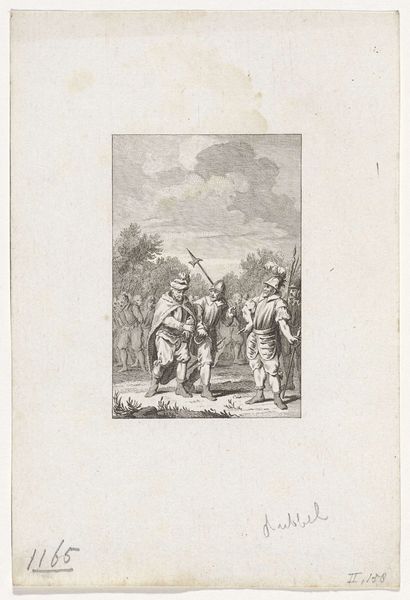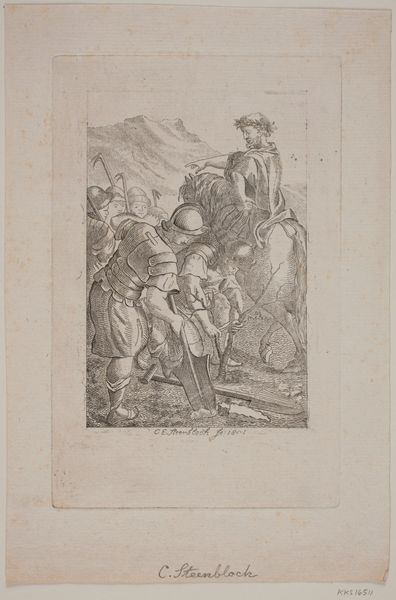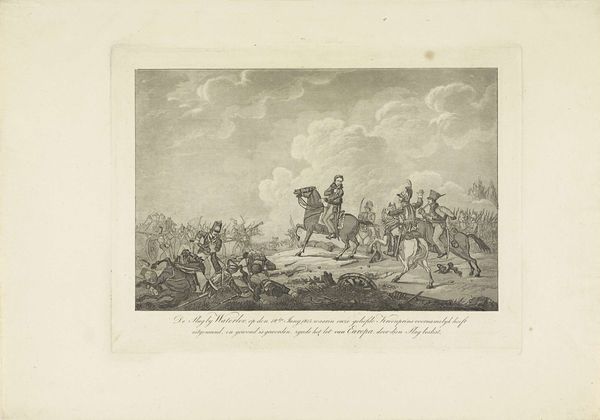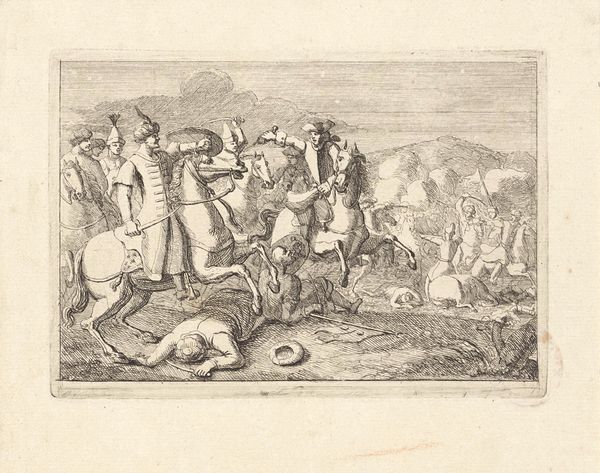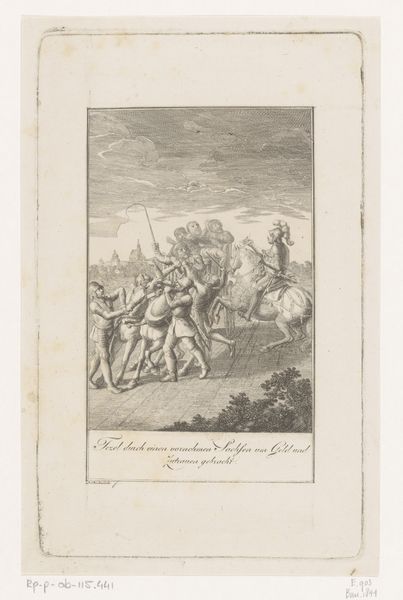
Dimensions: height 275 mm, width 220 mm
Copyright: Rijks Museum: Open Domain
Editor: We're looking at "Gevecht tussen Barthold Entes en Agulo te Vlissingen, 1572," an engraving by Theodoor Koning from around 1780. It depicts a chaotic battle scene. I’m immediately struck by the raw energy, despite being rendered in such fine lines. How do you interpret this work, particularly the symbols it might be employing? Curator: The engraving is teeming with symbols, acting as a condensed history lesson. What do you see in the postures of the fighters, for example? Agulo is recoiling in horror as Barthold goes after him with the ax raised high above his head, symbolizing defense. Editor: It seems more like desperation than defense; it speaks to the psychological toll of this war. Does it portray a common sentiment during this conflict? Curator: Exactly. The image captures that particular struggle but goes beyond to evoke a universal sense of conflict and its brutal cost, but how do we know the people in conflict. I ask you what clues does the picture leave behind to let you know who is who. Editor: I think that if we examine the clothing and the armaments carried into the fight, the clues begin to speak louder about that matter. Also the papers underneath the graphic seem to show text and handwriting. This work resonates with echoes of past conflicts. What are your thoughts? Curator: Indeed, engravings like this functioned as accessible forms of historical narrative. Beyond the depicted scene, it immortalizes collective memory, constantly reigniting interpretations of bravery, sacrifice, and resistance, echoing in political discourse throughout time. Editor: It's amazing how a single image can encapsulate so much historical and cultural meaning. Thank you, this really provided another layer of appreciation. Curator: My pleasure. Every detail is a carefully placed piece of a much larger cultural puzzle.
Comments
No comments
Be the first to comment and join the conversation on the ultimate creative platform.
